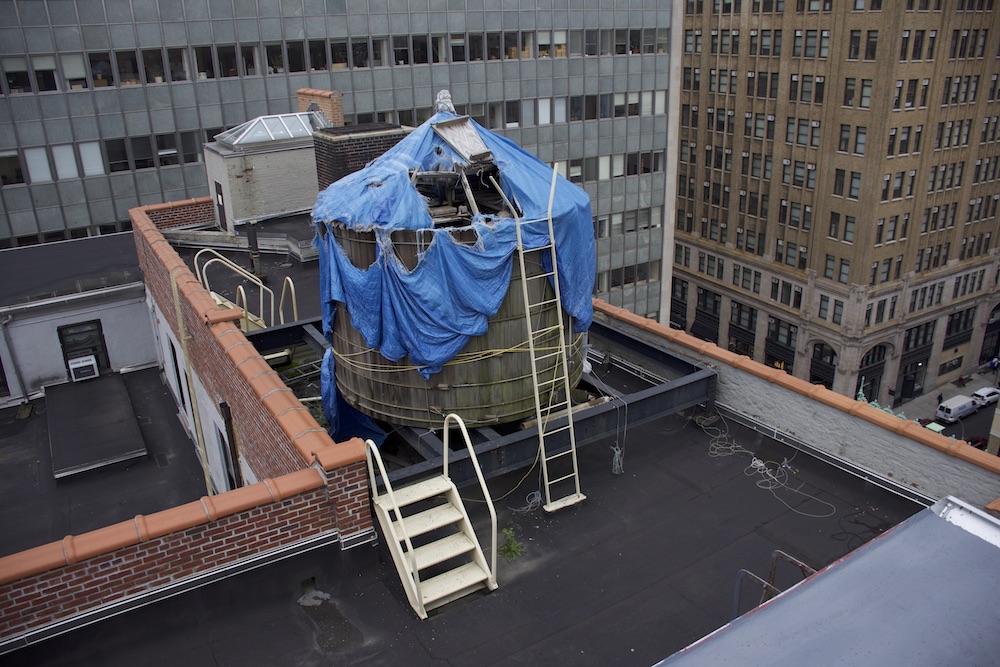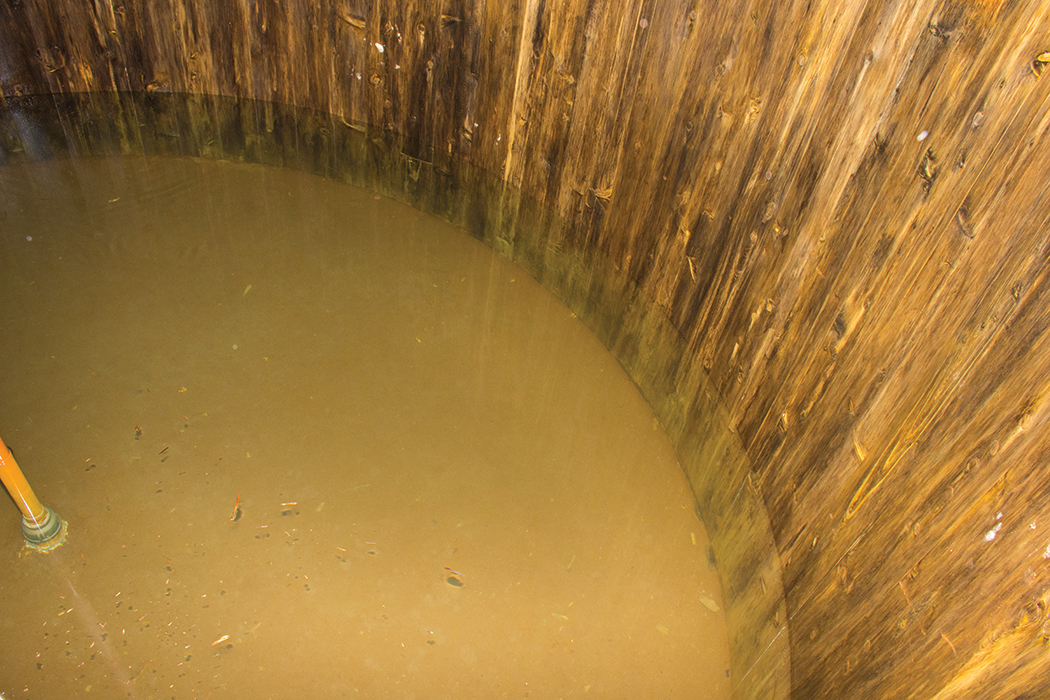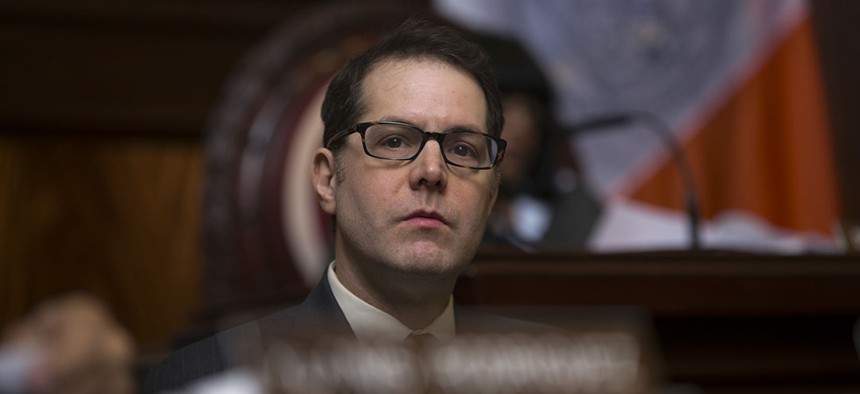At a New York City Council hearing on Tuesday, health officials were under pressure to respond to reports of neglected drinking water tanks across the city – and they downplayed the risks.
New York City Councilman Mark Levine, who chairs the Health Committee, stressed the need for greater regulation at the oversight hearing, bemoaning the lax oversight by health and buildings officials. After learning that neither agency had issued a single violation for damaged water tanks in the last year, presumably because no building owner had self-reported deficiencies, Levine concluded that surprise onsite inspections must be required to keep building owners honest.
“Either we have a pristine stock of water tanks and everyone is telling the truth and no violations are warranted, or there are defects which are not being reported or are being inaccurately reported,” Levine said. “And we don’t have a system to catch that,” Levine said. “It strains belief that there would be no defects. So, it sounds to me like we have a failure to enforce for the physical integrity of the tanks.”
Health officials disagreed.
“I think we really have an enforcement system that is properly tailored to the extremely low risk here,” said Corinne Schiff, the city’s deputy commissioner of environmental health. “We’ve never linked disease to a drinking water tank.”
Health officials insisted that the current inspection regime was sufficient, and offered only tepid support for proposed legislation that would broaden and strengthen oversight of the thousands of wooden rooftop water tanks that supply city dwellers with water for drinking, bathing and cooking.
The city’s Department of Health and Mental Hygiene has a long history of resisting reforms to the laws governing the city’s iconic wooden drinking water tanks. Over the last 10 years, however, city lawmakers have passed laws to add some measure of accountability to a century-old water delivery method that was maintained purely on an honor system before 2009.
In a preamble to the proposed reforms, a New York City Council Health Committee report cited recent public concern over revelations of neglect and contamination in the city’s water tanks detailed in a City & State investigative series and subsequent emergency action by Council Speaker Corey Johnson as catalysts for the proposed changes.
City & State previously reported that the tanks are widely neglected, with EPA officials saying such tanks are vulnerable to contamination by animals and insects carrying pathogens, risking waterborne disease outbreaks. Subsequent reports found neglect, decay and contamination was never reported to authorities. One article detailed how handwritten reports documented dead birds, squirrels, flying insects, and other things floating and growing inside NYCHA’s many damaged wooden drinking water tanks, and yet the unsanitary conditions were omitted from NYCHA’s inspection filings with the city health department. Another report featured a dilapidated water tank atop city sanitation offices that was repeatedly certified as being in perfect condition.

“We have all seen stories and pictures of water tanks that are poorly maintained, and this is unacceptable,” said Demetre Daskalakis, deputy commissioner of disease control at the New York City Department of Health and Mental Hygiene. “Any such condition must be addressed expeditiously and we are dedicated to holding building owners accountable to ensure they meet the existing maintenance, health and safety standards.”
Nevertheless, Daskalakis said that health officials “are concerned” some of the proposed bills would create “mandates that are unnecessary, given what the data tells us about a lack of a public health risk associated with water tanks.”
The seven council bills would reform existing law in various ways, including new requirements that tank inspectors submit annual reports directly to the health department (Intro 1053); that inspection results be recorded before tanks are cleaned (Intro 1050); that only specially-trained plumbers could inspect and clean tanks (Intro 1057); that damaged tanks be repaired within 90 days (Intro 1167); that photo or video evidence of the tanks’ condition be submitted with the annual inspection (Intro 1069); that health officials conduct their own unannounced spot checks of water tanks (Intro 1056); and that additional spot checks be performed after harmful bacteria or a violation is found (Intro 1138).
The city does not inspect or test drinking water tanks and has not studied them for two decades – in fact, after over 100 years of using the rooftop wooden vessels, public health officials do not know how many there are or where they all are, although an effort is being made to locate them after the council passed a law requiring the health department to do so.
Health officials rely on annual inspection reports generated by vendors hired by building owners to report unsanitary conditions. However, these vendors rarely report such contamination and several large companies only document conditions in the tanks after they are cleaned and disinfected, often leaving no record of any contamination they find.

Still, health officials said they were confident that water tanks pose no health risk.
“I can assure you today that our tap water is safe to drink. We know this because the Health Department has a comprehensive surveillance system that identifies clusters or outbreaks of disease, and we have never linked cluster or outbreak of disease to a water tank,” Daskalakis said. The program monitors reports of illnesses at hospitals and sales of anti-diarrheal drugs at pharmacies that opt in to the program.
Reports of animals and insects deteriorating in the city drinking water have troubled senior public health scientists at the federal level. After reviewing dozens of photographs of the tanks, EPA scientists concluded that the poorly maintained wood water tanks risk waterborne disease outbreaks in the thousands of New York City buildings they serve.

Levine raised the issue with the health officials.
“There could be a dead animal sitting in there for months and months and months. And then of course you clean it and the tank passes inspection, but we would never know about the prior contamination,” Levine said. “Knowing the state of the tank before cleaning is more relevant.”
Schiff, the city’s deputy commissioner of environmental health, took a different tack.
“We haven’t had a chance really to talk about the inherent safety features that are built into the drinking water tank,” Schiff said, extolling the cedar barrels as “very sturdy structures.” Schiff then dismissed any concerns about the post-cleaning inspection observations or concerns about dead animals in the drinking water supply.
“Even if what you are hypothesizing is true, that’s OK as a public health matter,” she said. “This system is set up to be finely calibrated to the very, very low risk that we see.”
“With all due respect,” Levine cut in, noting the lack of documented cases of water tank-linked illnesses. “The public health interest is that people aren’t grossed out and therefore stop drinking tap water.”
Levine then pivoted to the question of what was being done about NYCHA’s false water tank inspection reports and what health officials had done about it. Schiff noted that annual inspection reports are submitted under penalty of perjury.
“Has anyone ever been charged with perjury on these grounds?” Levine asked.
“Not that I know of,” Schiff said.
“Not in the NYCHA case?” Levine asked.
“Uh, not that I know of,” Schiff said.
“That would seem to trigger a perjury charge, no?”
“I would suggest that NYCHA respond to those questions about those reports and what happened there,” Schiff said.
“Well, it’s not clear to me why it wouldn’t trigger a perjury charge considering the laws that you just laid out,” Levine said.
While it is unclear if any perjury charges are being pursued by the Manhattan District Attorney’s office, New York City Councilman Ritchie Torres in June triggered an inquiry by the Department of Investigation into the “city’s failure both as a regulator and an owner.”
Eric Goldstein, the New York City environment director at the National Resources Defense Council, was so unnerved by the dismissiveness of health officials that he gave impromptu testimony.
“We may not have evidence of a public health link between water tank maintenance and illness or disease. But that is not the same as saying there is no such link or there is no such risk,” Goldstein said. “Let’s not pretend that when we have water tanks with holes in them, when we find dead rodents or feces floating in the tanks, that such conditions don’t present at least some risk to health.”
Has your building been inspected?
Use the interactive map below to find out if your building's water tank has been inspected, and when. (click here to view a full-screen version of the map)


